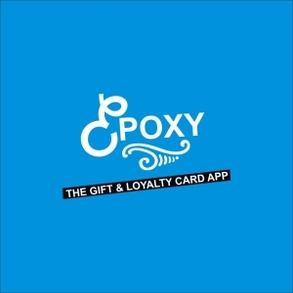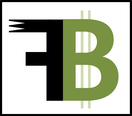 “Would you like to add chicken to your Caesar Salad?” “New York Strip, great choice. Shall we complement it with some mashed potatoes or sautéed spinach?” “Can I interest you in our famous Lava Cake for dessert?” These classic upsell examples can become a server’s bread and butter, presenting a theoretical win-win for all parties involved. Customers enjoy a greater extent of the restaurant’s offerings, the restaurant boosts its revenue, and of course the server makes that extra tip money. Most business-savvy restaurants will train their service staff, from busboys to servers and bartenders, on the art of the upsell to accomplish these exact objectives. But how far can you push the upsell? Upsell too little and you leave money on the table. Upsell too much and you will leave guests upset…sometimes very upset, to the point where they could lose trust in their server, and perhaps in the restaurant as a whole. Recently, I was one of those very upset customers, at a restaurant in Colorado. Our server had dollar signs in his eyes upon seeing our large group. We asked for his appetizer recommendations and he listed the three most expensive items in the category. He did the same with the entrées. We ordered several bottles of wine, and upon ordering another round he suggested some new Merlots that were ‘just five dollars more.’ He suggested dessert, and when we said no he still brought out the menus, making sure to ask again when collecting them back several minutes later. Needless to say, this is an extreme [but sadly, true] example of pushing the upsell too much. So how do you know where to draw the line? There is no magic formula, but the best way is to do what great restaurants do best: know your customer. 1. Understand the mood Read the customers’ body language as soon as they set foot inside. Do they seem happy? Do they appear to be in a rush? Is there any tension among the group? Are they here to celebrate? To do business? Different moods will certainly make customers more open or closed to upsell opportunities. Take in the customers’ tone when you first speak with them. When appropriate, try to work the reason why they’re dining with you into your opening conversation. This should clarify some of the above questions and set your next moves. Are they smiling when they speak with you? Are their responses open and amiable, or short and terse? The warmer the opening conversation, the more open to upsell the group will likely be. Opening communication among your service staff is a great way to read your customers while minding their privacy. Hostesses can pick up signs and communicate them with servers. Busboys can get bits and pieces of conversation that servers don’t have the opportunity to listen into. Sometimes the mood can change among the group mid-meal, and increased communication can allow servers to capitalize on newly-available upsell moments. 2. Always upsell at least once, and choose wisely Few customers, no matter how cold they may appear, can fault a server for trying to upsell them at least once throughout the meal. Note that this means just one upsell among the entire group, not per person. If that upsell converts, then another upsell is fair game and the process continues. The key comes with choosing when to plug in that upsell. Try to identify the person at the table who is most likely to convert. This will likely be the most outgoing member of the group or the member who looks like they will be taking care of the check. If your first upsell is a miss, it’s fair to try at least once more, but be sure to wait a bit [at least another course] before making another attempt. Additionally, unless your guests have clearly expressed that they’re in a rush, always offer coffee and dessert before bringing the check. 3. Recommend items across a broad price range Menu recommendations are a make-or-break garnering trust. If a customer asks your favorite entrées and you point them to the priciest choices, they will notice, and you are at risk for losing their trust altogether. When giving recommendations, speak from the heart and let them know what you truly think about the menu. Even if you lead them to order a less-expensive entrée, you’ve got points in their book and are better positioned to get them to order more sides, a dessert, or even specifically request you as their server the next time they visit.
0 Comments
 Portion size seems to have slipped under the radar as a critical factor in restaurant development, but remains a quintessential talking point among customers that owners must recognize and immediately react to in order to retain loyalty and brand image. Larger portion sizes don’t always positively correlate with a restaurant’s success, but there’s certainly a fine line between keeping it classy and starving your customers. Nutrition, obesity awareness and small plates are trending to an almost annoyingly high extent right now [this is coming from a very body and nutrition-conscious writer]. These themes, coupled with rising food costs and an increasingly competitive landscape, inspire owners to reduce portion sizes. In theory this kills two birds with one stone: keep customers happy and increase your bottom line. To execute these ideals in practice, however, requires significant insight about your customers, what they want, and what keeps them coming to you. The question you need to ask yourself, the owner: How far do you want to push the boundaries of portion size? Everyone will have a different limit, but think about a few of these points to determine where you fall along the spectrum: Know your customers This theme is recurrent across many of my articles, and will continue to be in the future, because this is the most important thing you can do to run a successful restaurant. What kind of customers does your restaurant bring in? Is eating to get full their top priority, or are they there to socialize with eating as a secondary activity? Some customers will be very vocal about not getting enough food, but most won’t bring it up. It’s uncomfortable to ask a restaurant for more [think Oliver Twist!], but at the same time those customers who leave hungry will have a hard time coming back. When in doubt, walk the floor and casually ask your loyalists what they think. Be as direct as you want, and convey that you only want to make their experience better. They will speak their mind. Look at the plates To get a better grasp on what your customers aren’t saying, take a look at the food people are leaving on their plates. Chefs use this storied practice to see which menu items are thrown out most often, but in this case, you're looking for the opposite. Are most of your plates coming back empty? Sure, it could be a sign that the item was a hit; but conversely, it can be a strong hint that your customers are still hungry. Assume your typical 4-top will split 2 – 3 appetizers, one entrée each, 2 – 3 sides and maybe a dessert. That’s quite a lot of food, on paper, and you’d expect there to be a few fries and the last 5% of a sandwich or pasta dish when the server takes everything away. If every plate comes back squeaky clean, that is your customers saying that they are still hungry, that they enjoyed the meal, but next time will likely find another place where they don’t have to scavenge for every last crumb. Consider both cost savings and their consequences What are your gross margins across your menu? If your food costs are tremendously high relative to your menu prices, then shrinking portion size may be an option. A healthy margin is ~70% [note, this is only considering cost of food. Adding labor, rent, etc. and your margins will shrink substantially]. But before downsizing, consider the alternatives: recipe modifications, sourcing changes, etc. Raising prices is tough, but are likely necessary if yours haven’t changed in a long time. Your loyalists will be much more likely to pay more to receive the same quality product rather than pay the same to witness the slow decay and eventual death of what brought them to your restaurant in the first place. Sure, people notice prices, but they will notice the change in the experience that much more. Trying to mask smaller portions through different presentation will rarely work. Your loyal customers will see right through fancy new bowls, or small cedar planks replacing plates. They will immediately notice that there is less food in front of them, and they do not like to be duped like that. Your loyalists trust you, and it is vital that you hold this trust sacred and communicate any changes that you are making, so that everyone is on the same page. These are but a few of many thoughts toward portion size management. More will very likely be discussed in future articles.  Dave Gasparine, like many franchise owners, was sick of the complications that came with marketing his businesses. Frustration had swept over his peers, partners and 21 franchise team members: despite all the experience among them and all the marketing tools they tried, none had found a solution that actually worked. He turned problem into profit by creating Epoxy, a user-friendly smartphone app that merges restaurant marketing, customer loyalty and overall simplicity. “Business is a bucket and customers are the water that fills it. So many tools focus on adding hoses, but ignore any leaks the bucket might have,” Gasparine begins. “Customer loyalty, the water already in the bucket, is the most important thing. Epoxy is the glue that holds the bucket together.” Speaking with a directed tone and a warm smile, Gasparine commands the presence of a driven entrepreneur. Holding an engineering degree and 10 years in the hotel industry, he develops his work integrate his hospitality experience into the business world. The problem came with marketing. “When you’re a small business owner, managing marketing and PR is over your head,” Gasparine said. “The stress of adopting so many programs into a restaurant was…an extra business on its own. There are so many different concepts, but no way to combine them all into one.” Every restaurant owner he talked to was going through the same pains. “It added up to the marketing companies enjoying all the benefits and the owners gaining nothing,” he said. Each marketing campaign held great potential, but shortcomings within each one led to failure. Gasparine created Epoxy to combine the best of every major restaurant marketing service. The tagline is “All stuck together in one app.” “Our vision for businesses is to create a system that owners can adopt with ease to alleviate the headaches of running a restaurant,” Gasparine said. “And for users, we’ve created a marketing platform that customers actually enjoy using and will recommend to others.” The way Epoxy works is simple, providing simultaneous mutual benefit to restaurant owners and their customers. When a restaurant signs up, they offer an initial discount for customers, as well as a digital punch card as a loyalty incentive [i.e. buy 9 sandwiches and the 10th one is free]. The restaurant in turn receives a QR code [the scannable squares for smartphones], whereby customers claim deals and ‘punch’ their digital cards. Customers find restaurants on Epoxy’s search engine, neatly organized by category, location, and service among other options. Restaurants each have their own page, containing essential information such as address, menu, phone number and pin, which owners can customize for exact location [i.e. exactly where you are in a shopping mall or busy intersection]. Once users pull up a discount, Epoxy turns the phone into a scanner, which scans the restaurant’s QR code on site. The roles are reversed intentionally: by holding onto one QR code, restaurants ensure that discounts can’t be duplicated or sent to non-users. The process takes about 20 seconds per customer. Epoxy’s design team comes from Apple and Fandango, and built the app with business owners’ need for ease in mind. Epoxy promotes restaurants through an enhanced word-of-mouth process. Users can send discount offers to friends. If those friends use the discount, the person who sent it receives an extra punch on their digital punch card. “It works out for everyone,” Gasparine said. “Customers get great deals and incentive to return, restaurants gain loyal customers, and Epoxy reaches more users, all through the same process.” For restaurant owners, one of the app’s most profound benefits is its data tracking. Every time a user sends or claims a deal, the data goes right to the restaurant. Owners can see how many customers have claimed deals, how often they return, how many times customers recommended the restaurant to others, and the frequency in which those recommendations turned into paying customer visits. “Printing costs for paper punch cards alone is more than $50,” Gasparine said. “Text services run more than $200 a month. This is going to save businesses a lot of money and even more headache.” |
AuthorBenjamin Brown is a seasoned restaurant writer and hospitality consultant, serving up SoCal's hottest food news and reviews. Categories
All
Archives
June 2021
@Foodie_Biz |
|
Home
About
Blog
Consulting Tips
Contact
Legal
|
Foodie Biz provides restaurant news and reviews for the food community, as well as consulting advice for restaurant owners and other hospitality professionals.
Contact Foodie Biz for media opportunities and freelance consulting projects. Contact Foodie Biz |



